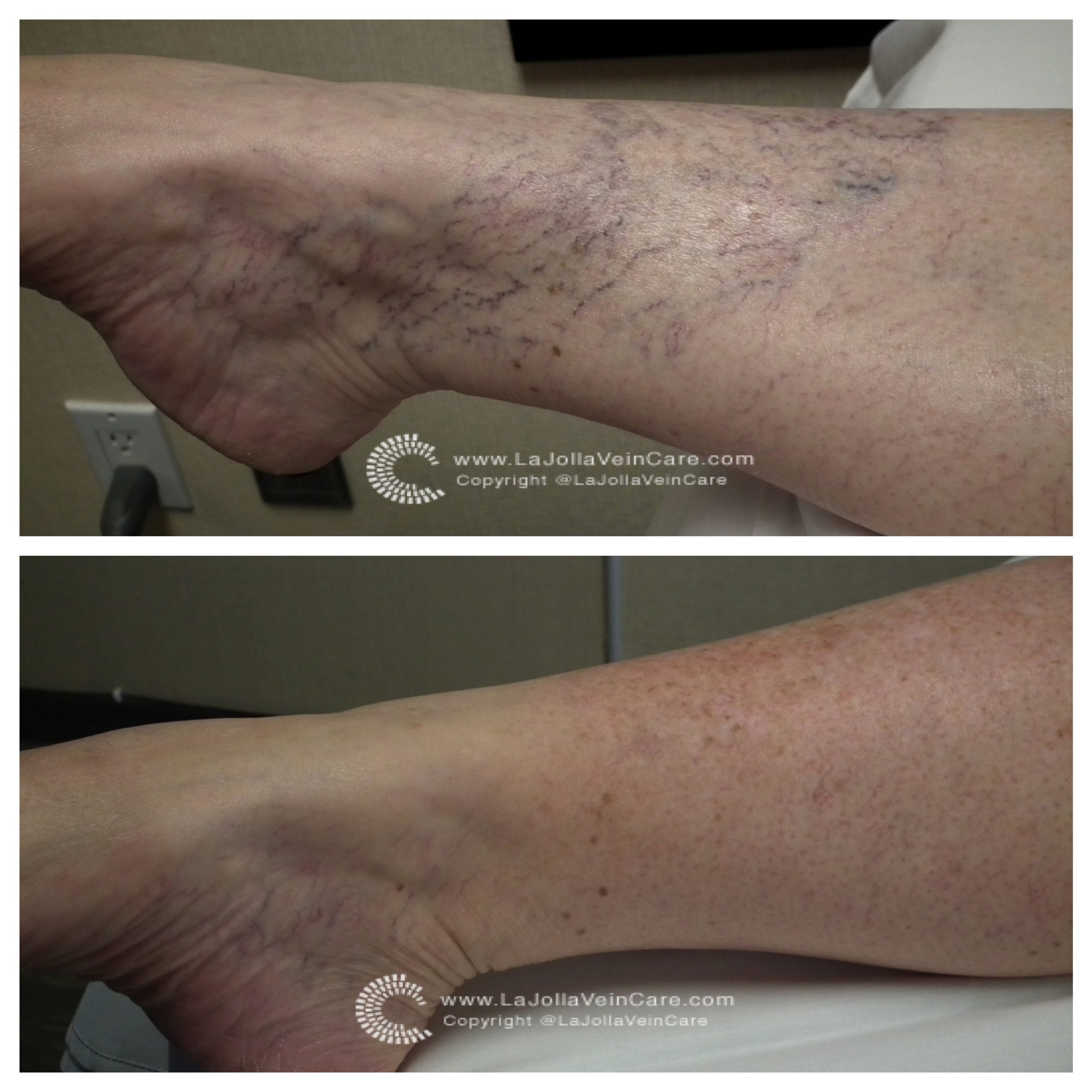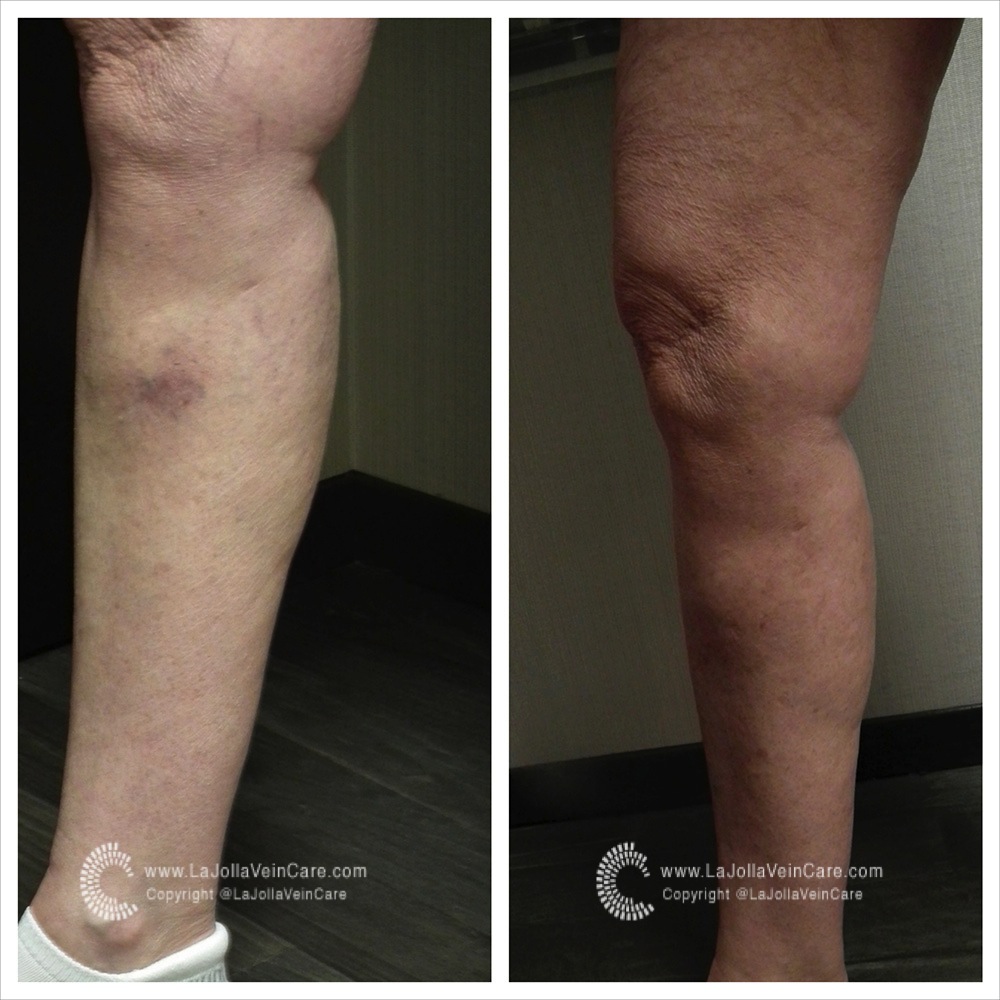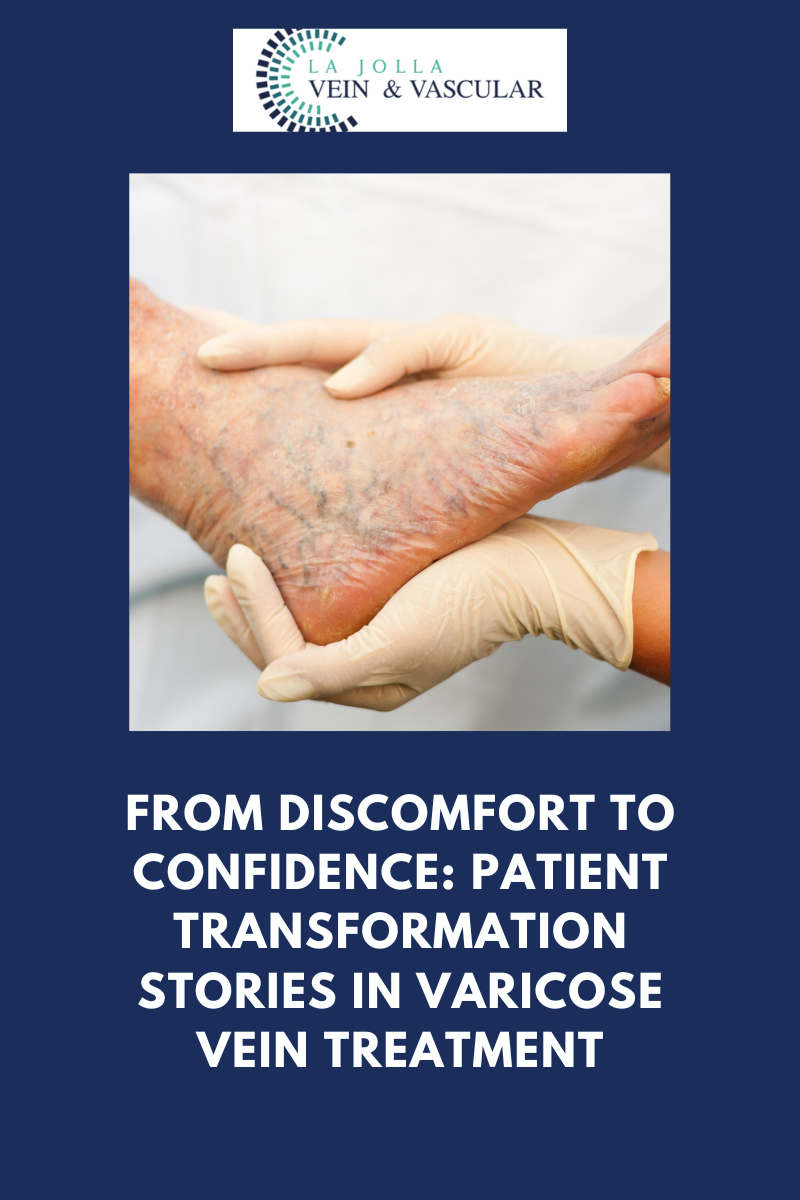Why Didn’t My Spider Veins Go Away?

Before and After spider vein treatment at La Jolla Vein Care. This picture demonstrates that spider veins (reddish spider-like vessels) can stem from underlying feeder vessels (the blue vein). The feeder vein can be compared to the ‘root’ of a weed; If you clip the surface branches of a weed without pulling the root of the problem, the weed will never go away.

Veins in certain locations, like in the inner knee or inner thighs and inner ankles, often arise from underlying venous incompetence of a vein called the great saphenous vein that runs from the groin along the inner thigh to the ankle. If spider veins do not respond to treatment, it is important to have an ultrasound evaluation to determine if there is an underlying source of the problem. Once the underlying problem is properly identified, it can be treated.
Spider veins can be the ‘tip of the iceberg’ and represent a bigger problem, that is not visible to the naked eye. For example, as seen in the first image, spider veins can arise from blue ‘feeder’ veins, which must be treated for best results.
Spider veins can also stem from an underlying problem such as venous reflux in larger veins, such as the great saphenous vein. As demonstrated in the second picture, spider veins in the inner knee, inner ankle and inner thighs can originate from this vein. This can only be determined by ultrasound examination. It is important to have your vein evaluated by a trained specialist. Effective treatment depends on an accurate and thorough diagnosis.





